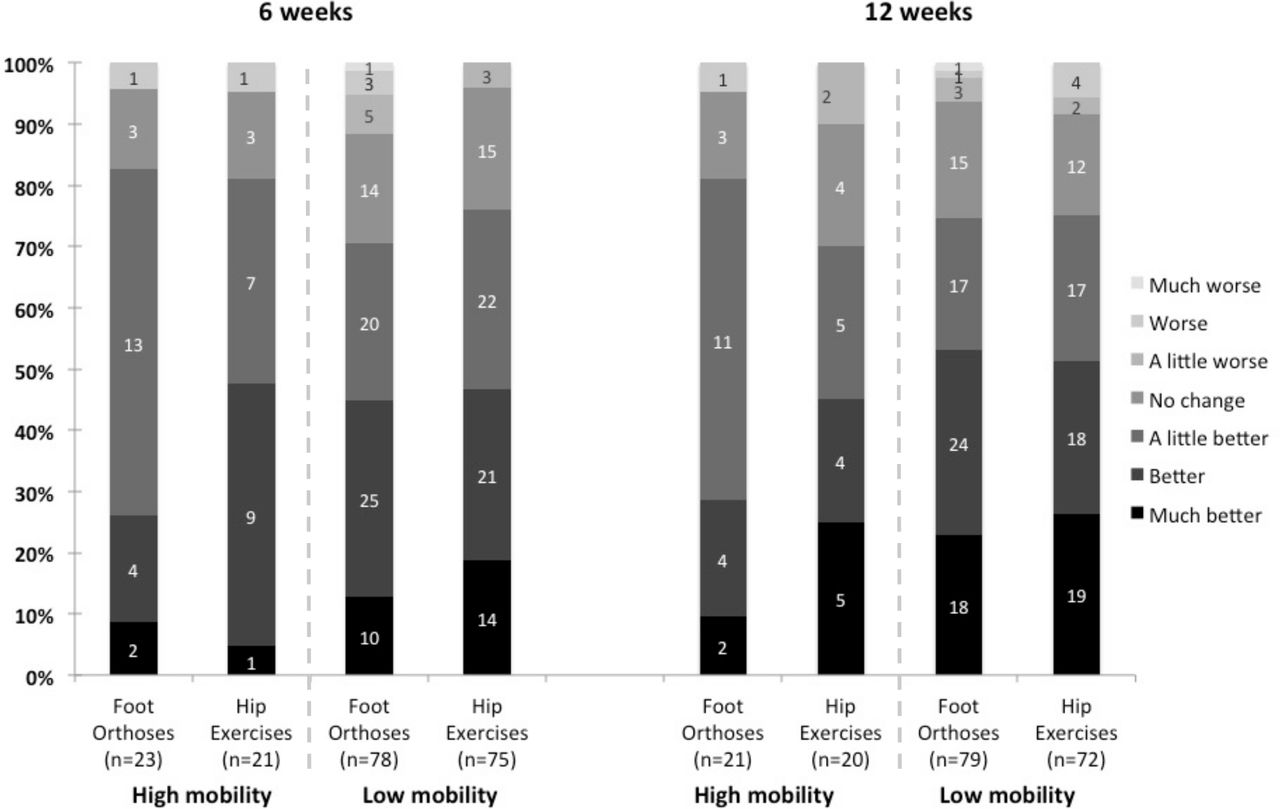Elaborating on last week’s BJSM podcast
In this week’s BJSM podcast we were privileged to have Dr. Mark Matthews and Professor Bill Vicenzino discussing a recent clinical trial they have undertaken researching the management of patellofemoral pain.
What is patellofemoral pain?
The speakers gave the following key points to know about patellofemoral pain:
| Key Clinical Features of Patellofemoral pain | |
| Pain | Characterised by pain around the anterior aspect of the knee |
| Aggravating factors | Pain gets worse with activities that load the knee (such as walking up stairs and running) |
| How is it diagnosed? | It is a diagnosis of exclusion based upon the clinical picture |
There are a lot of gaps in our knowledge and understanding of patellofemoral pain. Hence why it is referred to as the lower back pain of the lower limb! Recently, the focus has moved to improving our understanding on biomechanical factors that may impact patellofemoral pain, particularly around the posterolateral hip musculature.
The clinical trial
The trial Dr Matthews and Prof. Vicenzino carried out looked to focus on what we should be doing as initial management when we have diagnosed patellofemoral pain in a patient in clinic.
Research has shown that there are treatment options that work, but we don’t know which ones are best and for which patients. There is a need for us as clinicians to tailor management plans depending on the patient sat in front of us and aid us with the decision-making process. This concept is based around finding and using treatment effect modifiers to tailor management plans.
A treatment effect modifier = a patient characteristic that predicts a successful outcome from a specific treatment.
Simply put, we cannot know if we have a treatment effect unless we compare it to another treatment.
Patellofemoral pain is potentially influenced by proximal factors such as hip musculature, or by distal factors such as pronation of the foot. Major issues with previous studies into management of patellofemoral pain are that they have been retrospective studies with a lack of comparators. This clinical trial is the largest randomised control trial on patellofemoral pain to date and the primary outcome was at 12 weeks.
The clinical trial had 2 main aims:
- Is greater foot pronation (measured as midfoot width mobility) associated with better outcomes with foot orthoses, compared with hip exercises
- Where should you start with patellofemoral pain treatment? Foot orthosis or hip exercises, irrespective of midfoot width mobility
The Findings
1) Midfoot width mobility should not be used to help clinicians decide which patient with patellofemoral pain might benefit most from foot orthoses.
2) There is no difference between giving foot orthoses or hip exercises to patients diagnosed with patellofemoral pain (48% success rate with foot orthosis and 50% success rate with hip exercises). Note that previous studies have shown that for long term treatment, using both interventions (hip exercise and orthosis) give the best outcomes.

Where next with patellofemoral pain research?
There is increasing evidence that there are types of patellofemoral pain. In addition, there is increasing knowledge that psychosocial factors can play a role in some subgroups and this needs researching further. We need to get a better understanding of this condition. Getting patient involvement in this might be the key!
Key points to take away
1) A treatment effect modifier is a patient characteristic that is going to predict a successful outcome from a specific treatment.
2) We haven’t found any treatment effect modifiers related to patellofemoral pain as of yet.
3) There is no difference between treating with foot orthoses or hip exercises in successful outcomes for patients with patellofemoral pain.
A link to the paper: https://bjsm.bmj.com/content/early/2020/04/07/bjsports-2019-100935
Other BJSM resources on patellofemoral pain to check out:
1) BJSM Blog- Is education more important than exercise in treating patellofemoral pain?
2) Collins NJ, Barton CJ, van Middelkoop M, et al. 2018 Consensus statement on exercise therapy and physical interventions (orthoses, taping and manual therapy) to treat patellofemoral pain: recommendations from the 5th International Patellofemoral Pain Research Retreat, Gold Coast, Australia, 2017. British Journal of Sports Medicine 2018;52:1170-1178.
https://bjsm.bmj.com/content/52/18/1170
3) Maclachlan LR, Collins NJ, Matthews ML, et al. The psychological features of patellofemoral pain: a systematic review. British Journal of Sports Medicine 2017;51:732-742.
https://bjsm.bmj.com/content/51/9/732
Author and Affiliations:
Blog written by Dr Katie Marino as part of the new Friday Podcast Blog Series
FY3 Doctor, Nottingham
BASEM Executive Board Member
Council Member of the SEM section of the Royal Society of Medicine